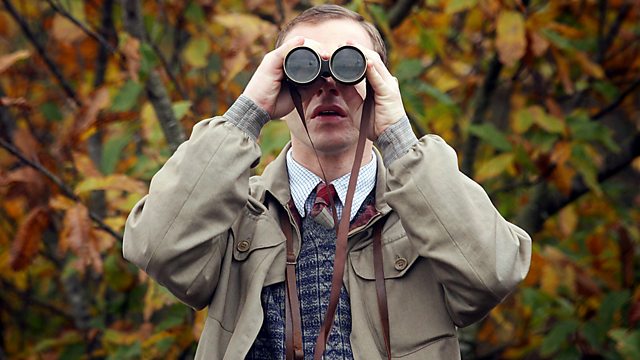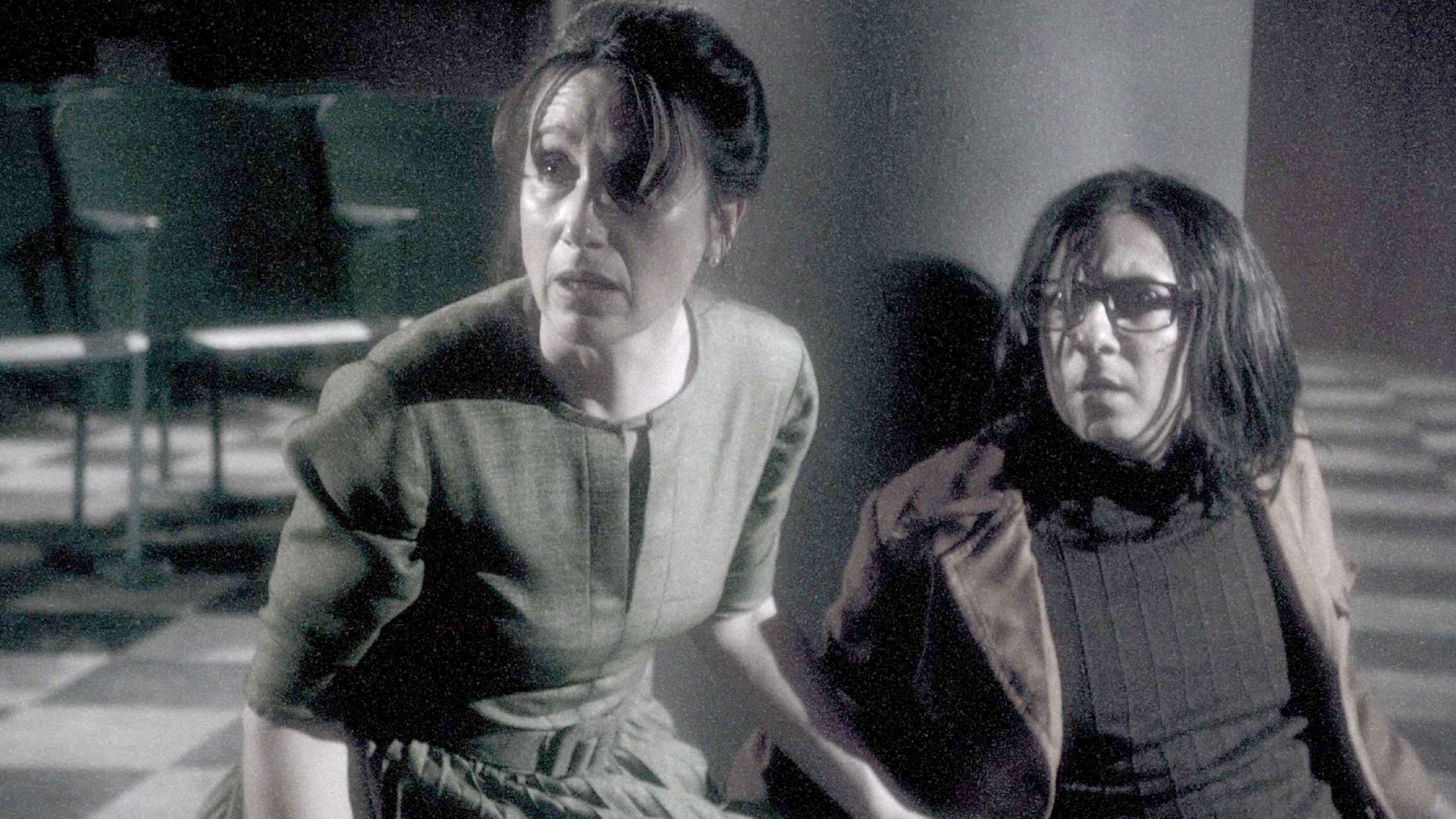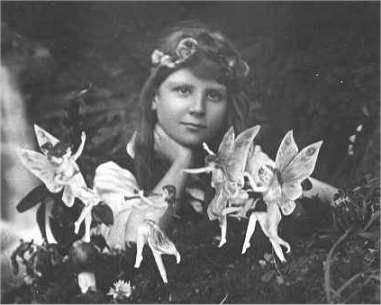
The queen of Italian horror cinema, British actress Barbara Steele, is eighty today! Raise a glass of something suitably dark, rich, and red to her.





 This American film co-stars Scotland's finest, Brian Cox (the original movie Hannibal Lecter), so for that reason I thought I'd give it a go. I'm glad I did. I've been disappointed by the quality of a lot of US horror lately, and while far from perfect TAOJD is pretty good.
This American film co-stars Scotland's finest, Brian Cox (the original movie Hannibal Lecter), so for that reason I thought I'd give it a go. I'm glad I did. I've been disappointed by the quality of a lot of US horror lately, and while far from perfect TAOJD is pretty good. |
| 'The Trial for Murder' |





The Women in Horror Annual 2 is the second volume of an anthology of horror fiction and nonfiction written by women. WHA promotes and celebrates female voices in horror, and the stories and papers contained within represent a diverse group of writers, each with their own unique vision. Ranging from supernatural tales of horror to quotidian terror, and touching on themes of empowerment, insanity, and freedom, the stories herein run the gamut from melancholic to darkly humorous. As was the case with the first volume, WHA 2 is further proof that horror has something for everyone.So, let's get started with the first story. 'Rumspringa' by Melissa Burkley presented me with a new word, right there in the title! I looked it up - 'Rumspringa, or “running around”, is the term used to describe the period of adolescence Amish experience starting at around age 16.' Lovely word.
![Women in Horror Annual 2 (WHA) by [Katz, C. Rachel]](https://images-eu.ssl-images-amazon.com/images/I/41srGBsjAXL.jpg)
 Fans of ST, if you've read the latest issue - which you can order here, along with back issues - why not give your verdict on which story is best? The poll is over to the right, top of the page. It's easy - just point and click in a mousey fashion. You can pick more than one if you can't settle on a clear favourite.
Fans of ST, if you've read the latest issue - which you can order here, along with back issues - why not give your verdict on which story is best? The poll is over to the right, top of the page. It's easy - just point and click in a mousey fashion. You can pick more than one if you can't settle on a clear favourite.
 |
| Democracy in action, and all that |
 |
| Mrs Pankhurst explains the concept of Ladyvoting |
 Over at the M.R. James podcast those wacky dudes have moved on from the ghost stories of Monty James - because they ran out of them, basically. They are now probing away at classic ghostly tales of the MRJ era. The latest podcast is on F. Marion Crawford's 'The Upper Berth'.
Over at the M.R. James podcast those wacky dudes have moved on from the ghost stories of Monty James - because they ran out of them, basically. They are now probing away at classic ghostly tales of the MRJ era. The latest podcast is on F. Marion Crawford's 'The Upper Berth'. The final story in Imposter Syndrome is by Phil Sloman. It's the tale of a celebrity, a big star whose face is known to millions. He is the subject of a virtual reality 'game' in which people get to live his life. Unfortunately, the internet being what it is, people soon start killing him. In fact he gets killed in ever more bizarre and inventive ways. Then he decides to play the game, and kill himself. Virtually, of course. Will his long-suffering fixer be able to fix the resulting mess?
The final story in Imposter Syndrome is by Phil Sloman. It's the tale of a celebrity, a big star whose face is known to millions. He is the subject of a virtual reality 'game' in which people get to live his life. Unfortunately, the internet being what it is, people soon start killing him. In fact he gets killed in ever more bizarre and inventive ways. Then he decides to play the game, and kill himself. Virtually, of course. Will his long-suffering fixer be able to fix the resulting mess?

Riana’s gimmick is definitely a reference to The Ring’s Sadako and similarly scary female spirits, with her long hair falling in front of her face and schoolgirl-like outfit, while her doll calls to mind Annabelle from The Conjuring. Her ability to totally stay in character while still lending her trick a touch humor (and keeping it creepy) shows The Sacred Riana is quite a talented performer.
The Sacred Riana did not appear out of thin air on the set of Asia’s Got Talent. Her real name is Marie Antoinette Riana Graharani and she’s been performing in Indonesia, at magic shows and in numerous TV performances, for a few years now.
The Sound of Horror. Local writer Tom Johnstone discusses the importance of sound in horror, drawing from radio, film and music he will examine his favourite subject for Halloween. As an example of radio-based horror fiction, we'll hear an extract from Thana Niveau's terrifying short story 'Two Five Seven', about numbers stations. if listeners want to find out what happens in the remainder of 'Two Five Seven', they'll need to buy a copy of The Eleventh Black Book of Horror from Mortbury Press...& More info about the author at thananiveau.comSome pretty good music, there, and of course the Carpenter movie themes create the ideal ambience. Great stuff. Follow the link to listen - if you dare!
We'll also hear one of Tom's supernatural stories, 'The Apotheosis of Jenny Swallow'
More info at tomjohnstone.wordpress.com US editor Ellen Datlow has tipped him as a 'name to watch' in contemporary horror fiction.
Music from Scott Walker, David Bowie, John Carpenter, The Kinks, Grinderman and more. Listen and learn
First broadcast on Bhcr.org.uk



If the horror anthology film has a weakness, the equivalent of a wooden stake or an overbearing (and decapitated) mother, it’s that they are almost always, by their very nature, uneven. Whether one director is in charge or the stories have been divvied up among a group, the result is still usually a mixed bag...Here's a bit I hadn't seen, from the Italian movie Black Sabbath. I didn't know there were Italian horror movies.
 Doubles, doppelgangers, people who impersonate minor celebrities for a living - two of those are weird. No, make that all three. The excellent James Everington has co-edited, with Dan Howarth, a selection of stories based on the disturbing notion that, out there, is somebody who looks exactly like you. Or me. Possibly both. The point is that Impostor Syndrome will soon be published by Dark Minds Press, and you can find details here.
Doubles, doppelgangers, people who impersonate minor celebrities for a living - two of those are weird. No, make that all three. The excellent James Everington has co-edited, with Dan Howarth, a selection of stories based on the disturbing notion that, out there, is somebody who looks exactly like you. Or me. Possibly both. The point is that Impostor Syndrome will soon be published by Dark Minds Press, and you can find details here.
Ghost or not, there was undoubtedly a public menace in Hammersmith, and people wanted it gone. A bounty of 10 pounds would be awarded to anybody who caught it.
In December 1803, villagers claimed a ghost, covered in a white shroud, was confronting travelers and, in some cases, physically attacking them.There were lots of other cases, as it seems our ancestors were both very credulous and amply supplied with linen etc. But there was a very serious side to the dressing up, especially in the days before organised police forces and adequate street lighting.
Like many other pastimes in 19th century Britain, ghost impersonating was a gendered activity: Women, especially young female servants, were often restricted to mimicking poltergeist activity indoors—rapping on doors, moving furniture, throwing rocks at windows—while the sheet-wearing hijinks were reserved for young men who, far too often, had scuzzy intentions.All in all, fascinating reads. I'm indebted to author Steve Duffy for drawing my attention to this interesting corner of social history.
This 384pp (approx) hardcover containing 24 stories and 2 novellas has been a massive undertaking by the author, the artist and by Sarob Press ... a true labour of love. The original stories have mostly only minor revisions/corrections etc and appear in the author’s preferred order ... and the overall feel and concept of this new volume is wholly different to the GSP edition.
It’s not a film that wants to be subtle – and, as I say, its unsubtler flourishes and jump scares may have been more potent in the theatre, like outrageously startling but cleverly managed stage illusions. But there’s a tremendous atmosphere to this picture, a dream-like oddness and offness to everything. Nyman and Dyson have created a weird world of menace, despair and decay.
This was one genre in particular that we in this country seemed to do well. A disproportionate number of the finest examples of the supernatural horror film were British productions (although sometimes, as in the case of The Haunting and Night of the Demon, with American directors). This expertise accords with the written ghost story, many of whose finest exponents have been British, too. Maybe it’s something to do with our climate - fog and rain and long winter nights are effective stimulants to the fantastic imagination.
 Well it's a triumph and a half for Andrew Alford, whose story 'A Russian Nesting Demon' ran away with the poll.
Well it's a triumph and a half for Andrew Alford, whose story 'A Russian Nesting Demon' ran away with the poll.






It’s not clear how the flag got into the MacLeods’ possession – either a gift from the fairies to an infant chieftain, a gift to a chief from a departing fairy-lover, or a reward for defeating an evil spirit. But the flag likely originated somewhere far away from Scotland, potentially even in the Middle East.

Another poetry pamphlet from the laureate of the fens, Pete Cox. This one contains a handful of works on a mysterious medieval outfit foun...
